
Become a member
Join today and help protect nature, beauty and history – for everyone, for ever. Enjoy access to more than 500 places with National Trust membership.
Glorious house, surrounded by gardens, moorland and deer park
Disley, Stockport, Cheshire, SK12 2NR
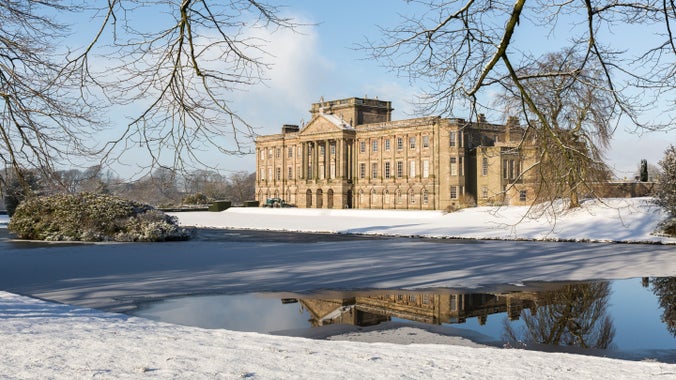
| Asset | Opening time |
|---|---|
| House | 11:00 - 15:00 |
| Garden | 10:30 - 15:00 |
| Park | 08:30 - 17:00 |
| Car Park | 08:30 - 17:00 |
| Crow Wood Playscape | 09:30 - 16:30 |
| Timber Yard Café | 10:00 - 16:00 |
| Refreshment Kiosk | 09:30 - 15:00 |
| Hall Shop | 11:00 - 16:00 |
| Timber Yard Shop | 11:00 - 16:00 |
| House Tearoom | 11:00 - 16:00 |
| Pre-loved bookshop | 10:30 - 16:30 |
| Ticket type | With Gift Aid | Without Gift Aid |
|---|---|---|
| Adult (18+) | £18.70 | £17.00 |
| Child (5-17) under 5s free | £9.40 | £8.50 |
| Family (2 Adults and up to 3 children) | £46.80 | £42.50 |
| Family One Adult | £28.10 | £25.50 |
| Group (Adult 18+) | £16.15 | |
| Group (Child 5-17) | £8.08 |
| Ticket type | With Gift Aid | Without Gift Aid |
|---|---|---|
| Adult (18+) | £8.80 | £8.00 |
| Child (5-17) under 5s free | £4.40 | £4.00 |
| Family (2 Adults and up to 3 children) | £22.00 | £20.00 |
| Family One Adult | £13.20 | £12.00 |
| Group (Adult 18+) | £7.60 | |
| Group (Child 5-17) | £3.80 |
Crow Wood play area is next to the Timber Yard. Ideal for natural play where younger adventurers can run, skip and slide.
Adventure playground/play area - more informationBrowse in the pre-loved bookshop at Lyme and you may just find that special book you've been searching for at the House
Cycle parking is located in the car park (next to the kiosk) and in the courtyard at the Timber Yard (next to the shop). Ask at the kiosk or in the Timber Yard shop if you want to borrow a lock.
Assistance dogs are welcome in all areas of Lyme. Dogs are welcome in the Lyme's estate and formal gardens every day on a short lead and off-lead areas are available.
Dogs allowed - more informationFree talks and tours are run by a dedicated team of volunteers and are subject to availiabilty.Go to the visiting the house at Lyme page for more information.
Picnic benches are by the Mill Pond and Timber Yard and picnics are welcome in the garden. Please take your rubbish home with you.
Accessible parking available. Level-access toilets and accessible toilet in the Timber Yard. Step-free pathway leads up to the north front of the house from the car park. Wheelchairs and shuttle buggy/minibus available.
There is a space to change in the toilet block in the garden. The facility includes an adult-sized changing bench, a hoist, and a peninsular toilet.
At Lyme we are committed to making everyone feel welcome. This Visual Journey page will help you prepare for you visit to Lyme and includes how to get around with information for what you might see and do.
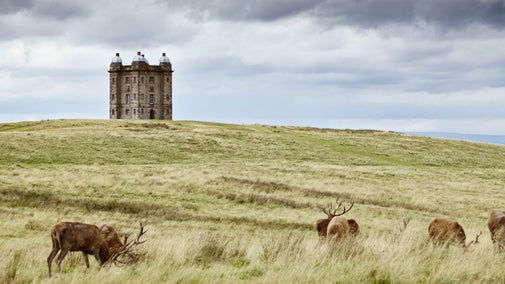
Whether you're a local community club, planning a school trip, or just a break with a friends, visit Lyme with your group and enjoy a discounted rate to explore at your leisure. Discover what's on offer and how to book your visit here.

If you find walking difficult you can still enjoy Lyme, thanks to the Tramper, all-terrain mobility scooter that's available to borrow. Available from the Ticket Office at the house, those with reduced mobility can explore the garden along designated Tramper routes while taking in glorious views of surrounding Manchester and Cheshire.

Lyme is a three pawprint rated place. With 1,400 acres of rugged moorland, ancient woodlands and formal gardens to explore, Lyme is a great day out for you and your dog. Find out where your dog can go and the facilities available below.

Find out information on professional photography, drone and wedding photography at National Trust places.

Step back in time to a house with six centuries of history. Explore beautiful features and the fascinating collection.
The 1,400-acre grounds encompass formal gardens, ancient woodland and rugged moors, with various fascinating follies to explore.
Wander through Lyme's glorious gardens and enjoy the contrast between cascading water and still reflections.
Let off some steam and have fun with your family in Crow Wood. The perfect place for smaller adventurers to run, skip and slide.
See what's coming up at Lyme. From family activities to concerts and guided walks, there's something for everyone.
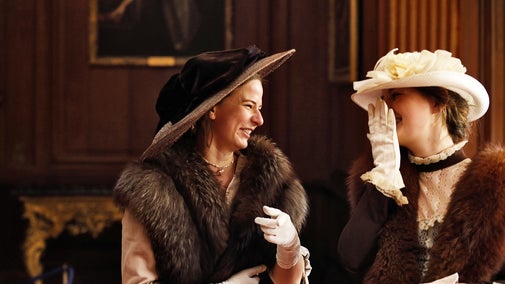
Get out in the fresh air, re-connect with nature, and stretch your legs on one of our free volunteer-led group walks.

Join in with the theatrical fun as Animal Crackers takes you on a self-guided journey of mischievous merrymaking through the house. Have a dance party with King Stag, perform a puppet show, and do karaoke with badgers. With larger-than-life installations and a traditional Christmas theme, it's an immersive and festive experience for all the family.
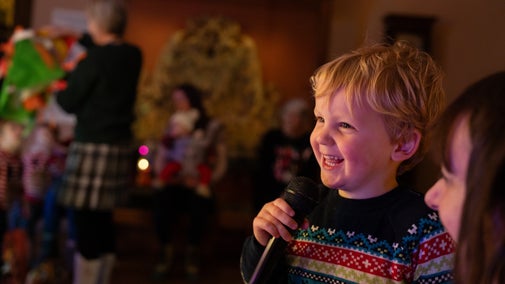
Get into the festive spirit at Lyme with Animal Crackers, where wild and wonderful animals have taken over the house. Listen to choirs performing Christmas classics in the chapel and warm up after a wintery walk with festive afternoon tea in the Servants' Hall.
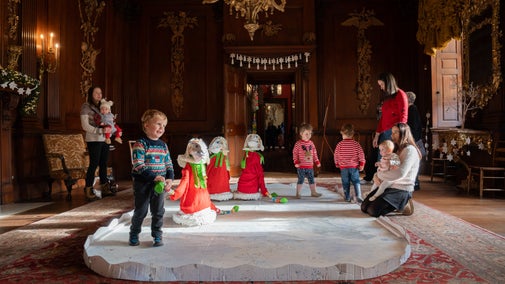
Explore all the different areas of the garden at Lyme. Appreciate the changing colours of the garden with the wild moors and parkland beyond.
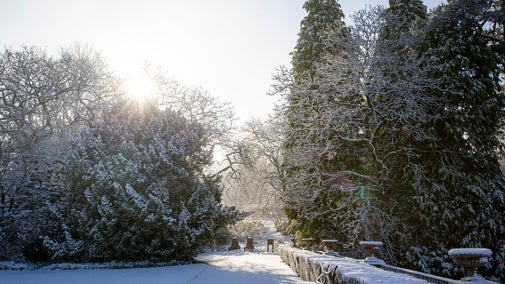
From running, skipping and jumping around Crow Wood play area and dressing up in period costume inside the house, to spotting red deer in the park, there’s something for everyone at Lyme.

Inside the house you can discover unusual objects and strange secrets from six centuries of family history at Lyme in Cheshire.
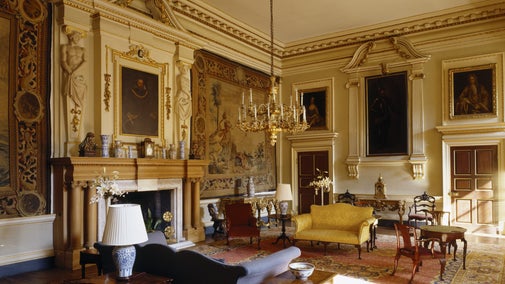
From leisurely strolls to soft hiking or more challenging rides enjoy the outdoors surrounded by spectacular countryside views.

There's over 1,400 acres of historic parkland to explore at Lyme in winter. Discover thriving wildlife during your walk into nature, and seek out the follies for some of the best views over Cheshire.
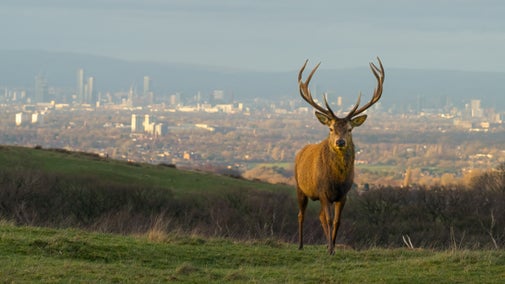
Lyme is a three pawprint rated place. With 1,400 acres of rugged moorland, ancient woodlands and formal gardens to explore, Lyme is a great day out for you and your dog. Find out where your dog can go and the facilities available below.

Discover Cheshire’s heritage and nature through grand houses, deer parks, seasonal gardens, woodland, moorland, and even a cotton mill.

Beautiful woodland and wonderful views await you on this self-led walk to Lantern Wood. On a clear day look out for Kinder Scout, the hills of Derbyshire and Yorkshire, Holme Moss and Winter Hill.

Take in impressive views of Cheshire and Greater Manchester on this pleasant walk to Paddock Cottage, in a tranquil area of Lyme Park estate.

If you're looking for short walk with a big payoff, a walk to The Cage is essential on your visit to Lyme.
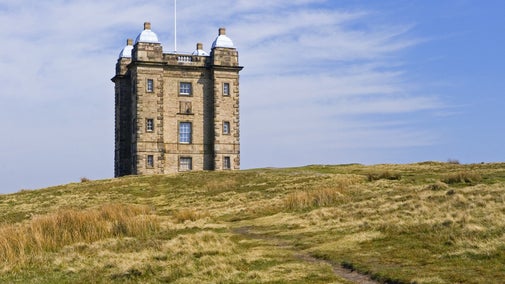
Take in impressive views of The Cage and Deer Sanctuary on this step-free walk to East Lodge in a tranquil area of Lyme Park in Cheshire.

Stride out along the Gritstone Trail and sample some of the finest walking in Cheshire. This hiking route begins at Lyme and is called the Gritstone Trail because of the local rock type which is millstone grit. This 35 miles route is a challenging walk stretching from Disley to Kidsgrove, and can be completed in one go, or there are options to break it up into smaller sections.

Lyme features as part of Stage 5 of the GM Ringway. The 8.2 mile route starts at Middlewood train station and finishes at Strines train station passing throughcolourful forest paths, sections of the Macclesfield and Peak Forest Canal and the old textile-printing settlement of Strines.

Grab the train to Disley and be rewarded with a picturesque village walk to Lyme.

Feeling peckish during your visit to Lyme? There's a choice of eateries, each serving a wide range of snacks and drinks. After you've refuelled, head to the shops to browse for a special gift or souvenir.
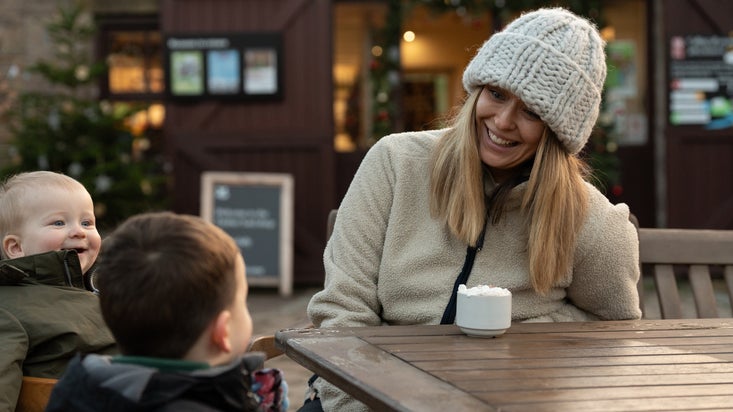

On the Lyme estate and deer park, this Edwardian cottage looks out over lush green countryside.

Tucked away on the glorious Lyme Park estate, Lyme West Lodge is a picture-book pretty Edwardian cottage set in leafy woodland.
Animal Crackers returns for another fun-filled Christmas at Lyme. The house once again becomes home to a menagerie of magnificent and unusual beasts with some familiar faces as well as new guests.
Get out in the fresh air, re-connect with nature, and stretch your legs on one of our free volunteer-led group walks.
From spotting red deer to sparking your imagination with interactive things to do in the house, there's plenty of activities at Lyme to please the whole family this half term.
Join us for an Easter Adventure at Lyme! With so much to do, choose your own adventure. With activities for every age from toddlers to teenagers there's something for everyone to enjoy.
Welcome to Lyme. Nestling on the edge of the Peak District, Lyme was once home to the Legh family and, in its heyday a great sporting estate.
The 1,400 acre estate with its medieval herd of red deer offers fantastic walks and stunning views.
For a more tranquil walk explore the elegant Rose Garden, Ravine Garden or the luxurious herbaceous borders next to the reflecting lake where a certain Mr Darcy met Miss Bennet in the BBC production of 'Pride and Prejudice'.
Head in to the house to step back in time to the Regency era - a time which saw great rejuvenation for Lyme.
The Timber Yard Cafe offers delicious hot and cold snacks, and range of cakes whilst the Refreshment Kiosk in the car park offers grab and go drinks and ice creams.
You can view online some of the items that Lyme has in its collection. The site catalogues approximately three-quarters of a million National Trust objects with more being added daily.
The largest estate in Cheshire, Lyme has been designed on a grand scale over a number of centuries. It has been a place to receive occasional royal guests, take friends hunting or to entertain on a lavish scale. Whether by taking a tour of the house or escaping on to the wild moors, you can still find the same sense of retreat today.
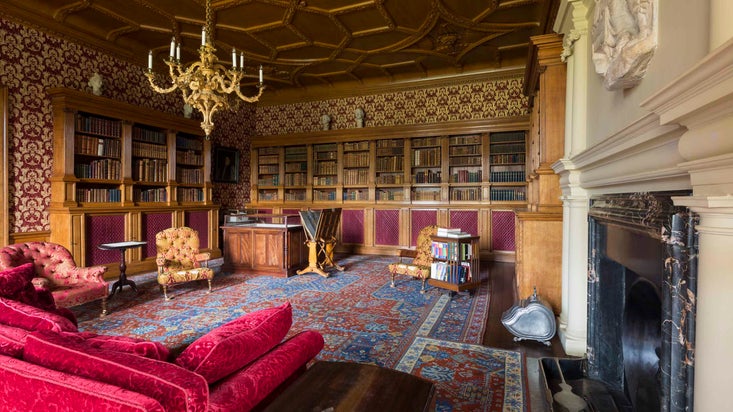
Find out more about the fascinating Lyme Missal, deemed the most important printed book in the National Trust's care.

Find out more about the restoration of the Flemish Cadmus tapestry at Lyme, a set of three which tell the myth of the founding of Thebes.
From ongoing conservation work to restoration work brought about by flooding and fires, the work of rangers and volunteers is a round-the-clock job.

From medieval deer park to RAF base, generations have shaped Lyme into the place you see today. Over the next few years, we need to adapt to look after the long-term future of this much-loved place. Find out more about future plans and how you can get involved.
Keep up with the latest updates from the River Bollin Project as we work to improve the health of the river along the catchment at Lyme.
Many hands make Lyme work – find out about the volunteer and work experience opportunities at Lyme, from rangers to conservationists, retail to building maintenance.

Find out about the supporter groups you can join in Cheshire and Greater Manchester including East Cheshire National Trust Association, South Cheshire Association and The Manchester Centre.
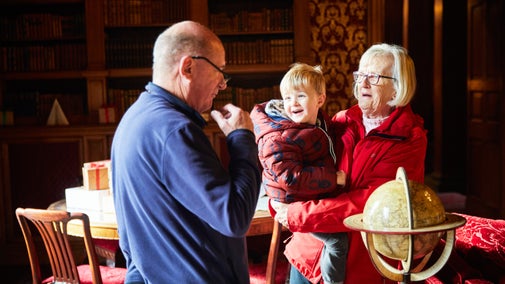

Join today and help protect nature, beauty and history – for everyone, for ever. Enjoy access to more than 500 places with National Trust membership.
By sharing your email address you’re agreeing to receive marketing emails from the National Trust and confirm you’re 18 years old or over. Please see our for more information on how we look after your personal data.